The Thanksgiving Cactus (Schlumbergera truncata) is an easy-to-care indoor plant with spectacular flowering. Receiving the name because the Thanksgiving cactus blooms in November is very simple to care for, grow and multiply indoors. In this article let’s review together How to Propagate Thanksgiving Cactus, Christmas cactus vs Thanksgiving cactus vs Easter Cactus, and Thanksgiving Cactus Care.
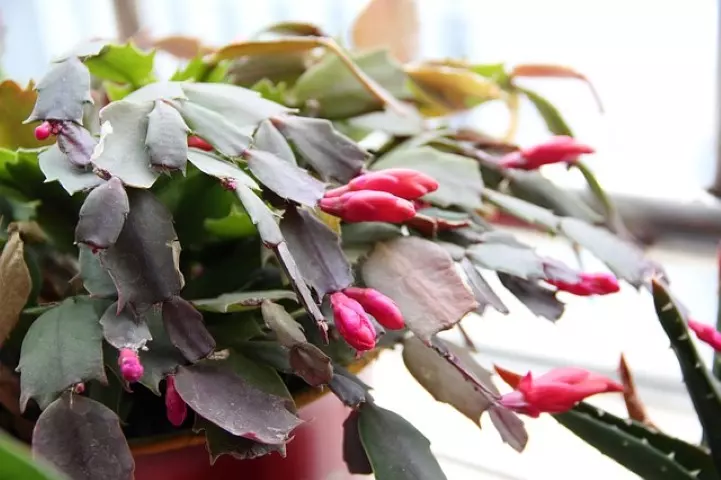
The species Schlumbergera is endemic to Brazil, evolutionarily a cactus modified to the subtropical rainforest climate. In the Northern Hemisphere, we enjoy this plant as a houseplant. However, Christmas, Easter, and Thanksgiving cactus can be grown as an outdoor plant in a tropical or hot climate, in shade, without direct sun exposure, and placing some mulch on the soil to maintain the soil moisture condition. Holiday cacti are an easy plant to care for and maintain as an indoor plant.
In fact, in most cases it will not be necessary to buy the plant since its reproduction through cuttings is also simple and we can obtain identical plants in a short time.
As always, we are going to let you know the main characteristics of its care. When living in a pot, we will recommend the best substrate and fertilizer to apply, especially during the flowering season.
Table of Contents
What is the difference between a Christmas, Easter, and Thanksgiving cactus?
Christmas Cactus vs Thanksgiving Cactus vs Easter Cactus
Thanksgiving cactus, Christmas cactus, and Easter cactus are very similar. However, it is not the same plant. All these cactuses are different species of plant of the genre Schlumbergera. Let’s see the differences between Christmas cactus vs Thanksgiving cactus vs Easter Cactus.
Be aware that many websites are referring to the genre Schlumbergera as “Schlumgera”. However, it is a typo because the right name of the genre is Schlumbergera.
The shape of the leaves is the easiest method to distinguish between Christmas, Easter, and Thanksgiving cactus.
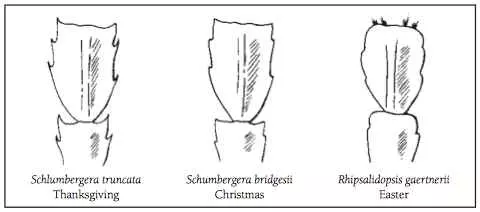
Scalloped or teardrop-shaped leaves characterize the Christmas cactus (Schlumbergera bridgesii).
The rounded margins of the Easter cactus (Schlumbergera gaertneri, formerly Hatiora gaertneri) leaf are centered on the leaf.
The Thanksgiving cactus (Schlumbergera truncata, also known as the false Christmas cactus) has sharp, claw-shaped edges on its leaves.
The blooms are unique on these Holiday cacti.
Christmas cactus vs Thanksgiving cactus vs Easter Cactus
Christmas Cactus: Blooms in December. It has white, red, or yellow blooms.
Easter cactus: This cactus blooms in the spring. The blossoms on this shrub are the most vibrant of the three. They are purple, crimson, or pink in hue and have a livelier appearance. The blooms of this cactus are more star-shaped than those of the other two.
The Easter cactus is the most difficult to care for of the three since it is more susceptible to overwatering or underwatering.
Thanksgiving Cactus: Blooms in November on average. Thanksgiving cactus blooms are asymmetrical, spreading horizontally from the terminals of the stem segments and projecting from the ovary.
The authentic Christmas cactus (Schlumbergera bridgesii) is difficult to come by in the marketplace. It is, however, quite easy to grow, so cuttings from someone who already has one may be obtained.
Between March and May, both Thanksgiving and Christmas cactus can rebloom.
Outside of its spring bloom, the Easter cactus seldom reblooms. Even if it is carefully cared for, it may not bloom for a few years.
Gallery – Easter Cactus – Schlumbergera gaertneri, formerly Hatiora gaertneri

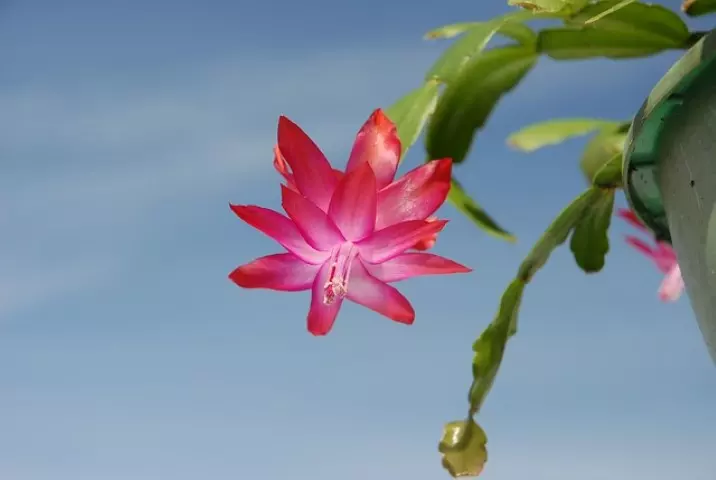
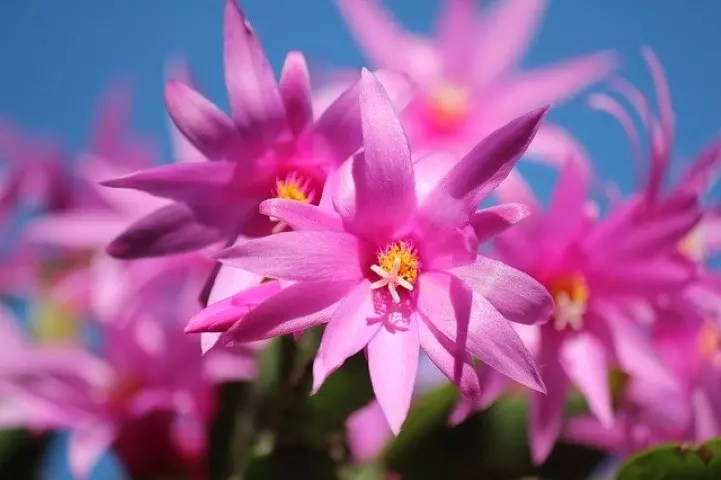
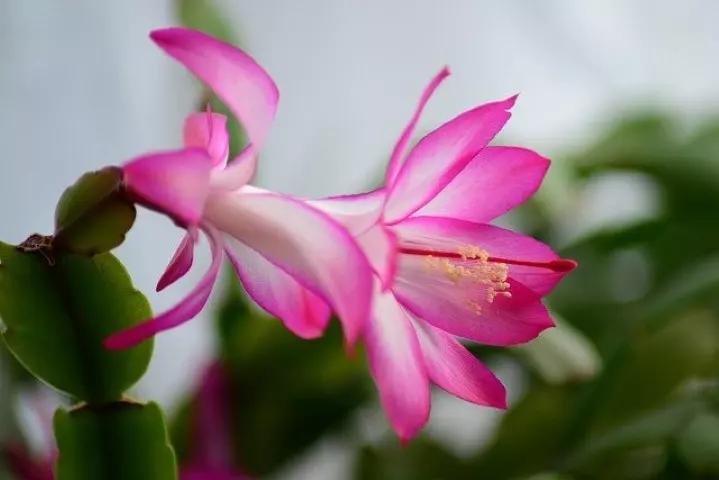
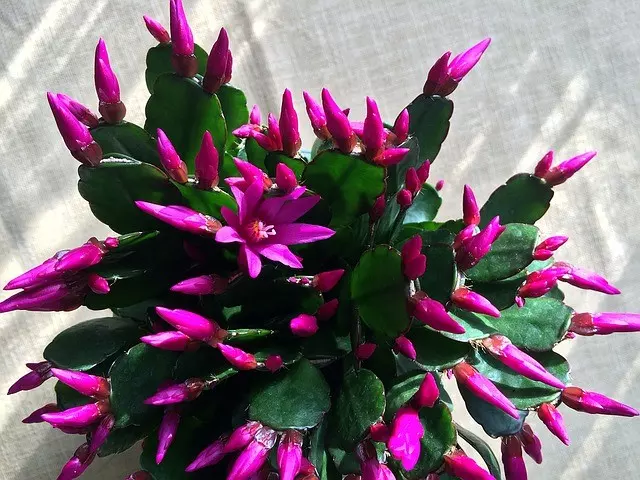
How to Propagate Thanksgiving Cactus
Continue reading this article to learn our suggested step-by-step about How to Propagate Thanksgiving Cactus (Schlumbergera truncate).
One of the advantages of propagating Schlumbergera is the propagation of this genre is very simple, you just need to be patient.
Regardless if it is Schlumbergera truncata (Thanksgiving cactus), Schlumbergera bridgesii (Christmas cactus), or Schlumbergera gaertneri (Easter cactus) the propagation method is the same.
In the following paragraphs let’s review How to Propagate Thanksgiving Cactus by cuttings.
Schlumbergera cactus are succulent plants, completely unrelated to desert cacti. Its development is precisely adapted to conditions of high rainfall (although they do not need it).
We will comment later on the characteristics of the irrigation, which will not be excessive at all. The flowers of the Thanksgiving Cactus emerge from the leaves, known as areoles (a specific axillary bud).
By following these tips, you will be able to have the Thanksgiving Cactus for many years and manage to multiply it through cuttings, in an almost infinite process.
The main thing of all is to know the climatological characteristics in which the Thanksgiving Cactus develops. Therefore, the first thing to say is that it is an indoor plant.
The ideal temperature is inside the house, between 64.4-77 F (18-25 C). Lower temperatures (up to 50 F, equals 10 C) as happens on many spring nights if we leave the plant on the balcony works well for the Thanksgiving Cactus as well.
However, an important condition that they have always carried in their genetics is the wet conditions. They need high relative humidity, so if they are going to live with you inside the house, they will need periodic foliar sprays (2 or 3 a week).
Environmental humidity has nothing to do with providing more water to the substrate, but rather the concentration of water in the foliar environment of its leaves, which will determine the stomatal opening and the quality and vigor of its leaves and stems.
How to Propagate Thanksgiving Cactus by Cuttings – Step-by-Step
Multiply Thanksgiving Cactus by Leaf cuttings
Let’s review step-by-step how to propagate Thanksgiving Cactus by Leaf cuttings.
Considering the Thanksgiving Cactus (Schlumbergera truncata) is a succulent plant, reproduction by cuttings is extremely simple.
How to Propagate Thanksgiving Cactus (Schlumbergera truncate). First, we will choose a stem of 4 inches (10 cm) from the end and submerge it in water (which we will change every 5 days).
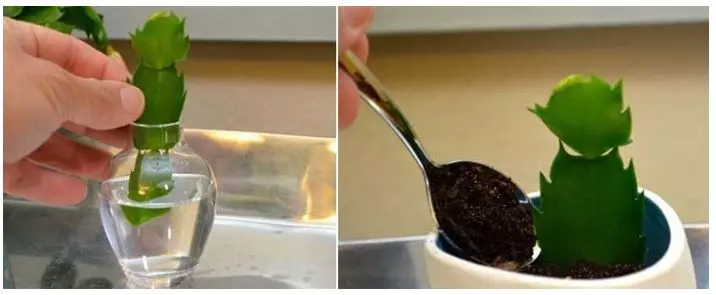
As soon as we see the first white roots form, it is time to plant them in a small pot with substrate and coconut fiber.
We will develop the plant indoors, with good lighting (but without direct sun), with an average temperature of 70 F (21 ºC).
As soon as we see that the aerial part of the Thanksgiving Cactus begins to develop, it will be a sign that it has settled well and the roots begin to absorb water.
From here and with time, the Thanksgiving Cactus will soon form a new plant with new buds from which new stems will emerge.
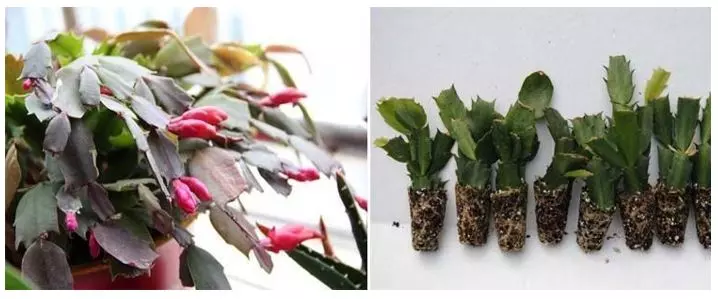
How to Transplant the Thanksgiving Cactus – Repotting Thanksgiving Cactus
As its size increases, the Thanksgiving Cactus will need a larger container and be repotted. To transplant a seedling or to repot a Thanksgiving Cactus it is recommended the operation is carried out with great care, in the spring months, where it can form new roots quickly.
Avoiding root breakage, we will place the plant in a new pot with a larger diameter and depth. After this operation, it is recommended to water generously for the first time to facilitate the adaptation of the roots and a less stressful situation for the plant.
Recommended Christmas Cactus Propagation Step by Step
Recommended Christmas Cactus Propagation in Water Step by Step
Where I can Buy Thanksgiving Cactus
If we were unable to obtain a Thanksgiving Cactus from cutting, the fastest (but least economical) option is to buy it directly from a nursery or a store.
The average price of a well-formed plant is around $15-20 in online stores although for half the price we find small plants even with flowers. (Order here or here).
No products found.
Thanksgiving Cactus Care
After understanding How to Propagate Thanksgiving Cactus let’s review how to care for the Thanksgiving Cactus and how to prune Thanksgiving Cactus. The pruning of the Thanksgiving Cactusis limited to removing shoots that are damaged, old or rotten.
Thanksgiving Cactus Pruning
We will cut approximately 2 inches (5 cm) from the base, to avoid the future spread of diseases.
Depending on the intensity of this pruning, we will rejuvenate and activate the formation of new stems from the active buds. It is important that after the operation (we can do it in spring or autumn) we apply fertilizers to encourage the new development of the plant.
Thanksgiving Cactus Care – Lighting
Inside the interior of the house, the Thanksgiving Cactus will not undergo many lighting changes. The correct thing is to place it near a window, where enough light can enter, but without placing it directly in the sun, since its leaves will dry out and it may lose its flowers.
Gallery – Thanksgiving Cactus (Schlumbergera truncata, also known as the false Christmas cactus)
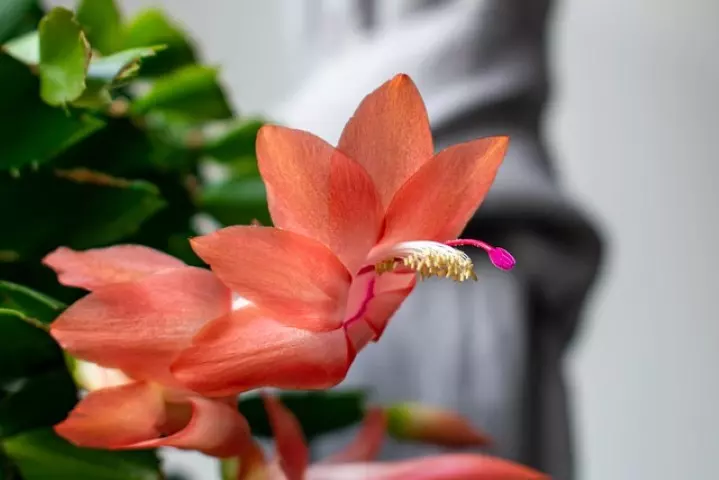

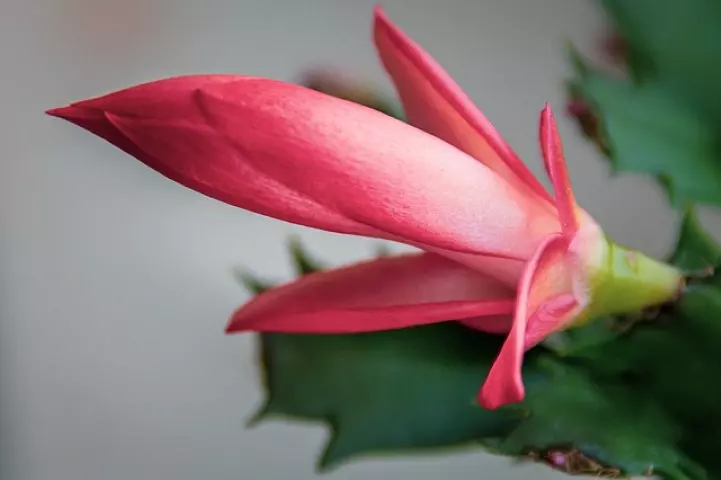
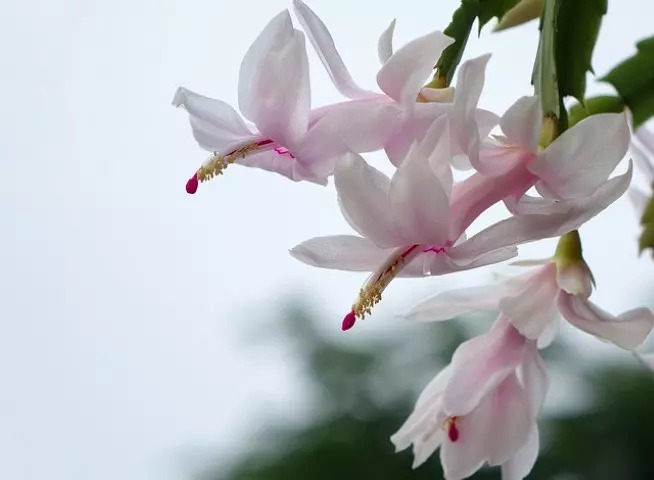
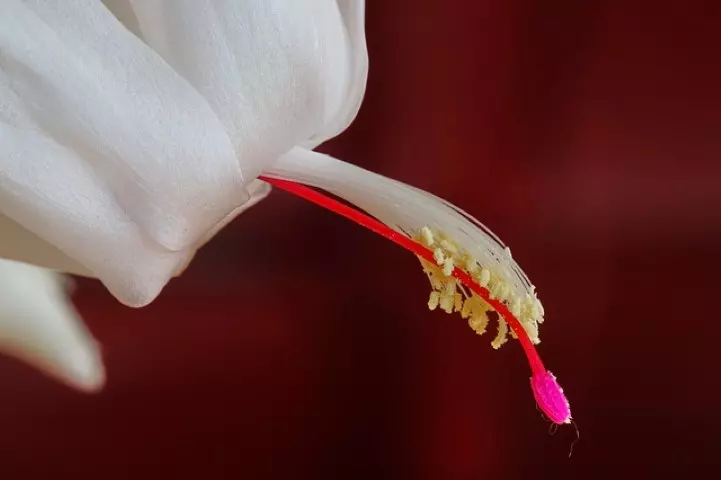
Thanksgiving Cactus Care – Soil
When considering a substrate for Thanksgiving Cactus avoids cheap substrates that contain excessive amounts of salt. Just buy quality brands.
Substrates that contain some sand or coconut fiber, as it greatly improve moisture retention and improves drainage.
When choosing the pot, we will check that it has enough holes in the bottom, to allow the water to flow out.
Many of these substrates already contain a small part of nutrients, which greatly facilitates the production of new roots.
An adequate ratio of nutrients in the substrate would be this:
- Nitrogen: 80-400 mg/l
- Phosphorus (phosphate): 100-500 mg/l
- Potassium: 300-900 mg/l
A growing plant usually consumes the nutrients of the substrate between the next 3 to 5 weeks. It will have to be taken into account to return the nutrients to the substrate through fertilization.
Soils with good drainage are one of the main characteristics in the care of the Thanksgiving Cactus. One of the biggest problems facing the plant is excess water which occurs in 90% of cases.
Thanksgiving Cactus Care – Watering Thanksgiving Cactus
Follow these watering tips for Thanksgiving Cactus and you will have no problems.
Summer and spring (temperatures above 25 ºC):
2 waterings a week (1 glass of water per 20 cm diameter pot).
Autumn and winter (temperatures below 25 ºC):
1 watering a week (1 glass of water per 20 cm diameter pot).
With these quantities and frequency, inside the house, the substrate will not dry out and will maintain a permanent temperature situation (the ideal state of humidity in the substrate).
Especially in the flowering period, promoting a slight drought in the plant generates greater flower production, since greater stress is associated with a greater number of flowers.
The organic matter of the substrate is sufficient for its development during the first months. From here, we will make applications with fertilizer together with the irrigation water every 15 days.
Gallery – Christmas Cactus (Schlumbergera bridgesii)
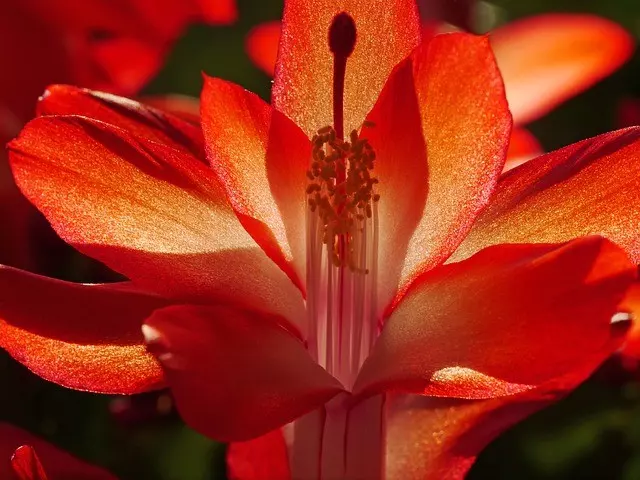
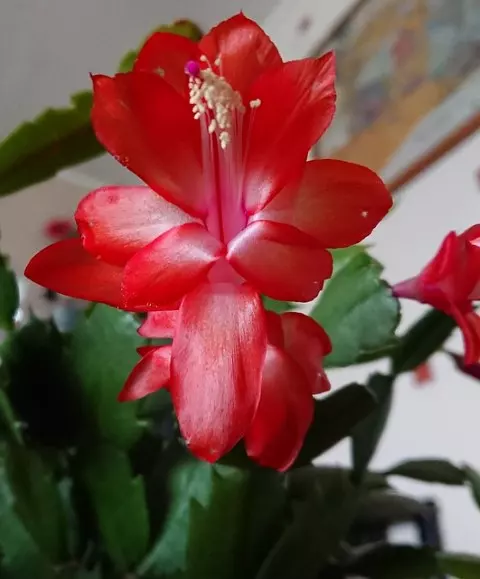
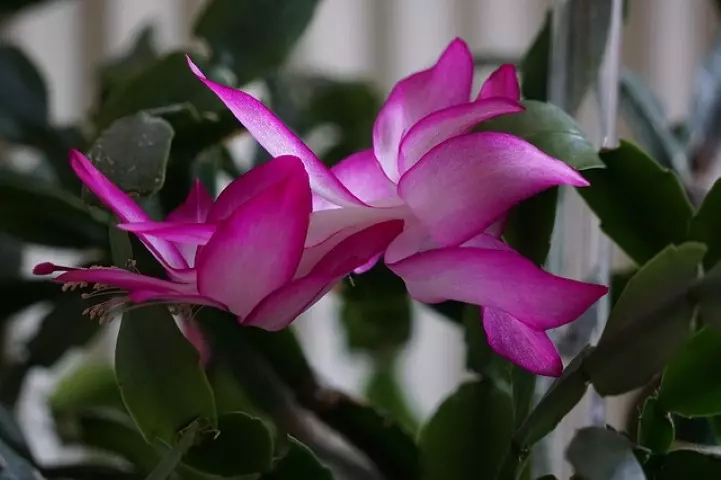
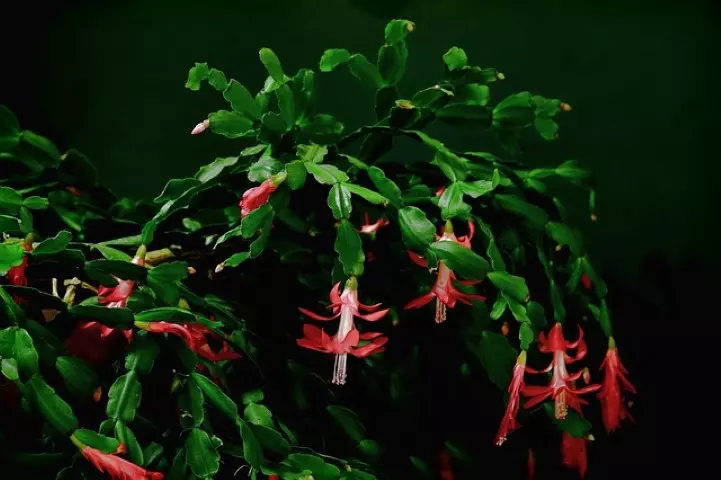
Recommended Fertilizer for Thanksgiving Cactus
Thanksgiving Cactus Care: The fertilizers for the Thanksgiving Cactus. They are usually balanced, with a slightly higher concentration of potassium. For example, an NPK 5-5-7 or NPK 4-5-7 with micronutrients.
The doses of the fertilizer for the Thanksgiving Cactus are usually marked on the product label. As a recommendation, we suggest applying 0.5 ml of fertilizer for each liter of water so as not to apply an excessive concentration of salts.
You also have the option of choosing a slow-release granular fertilizer. In this case, we recommend the NPK formula 12-10-18 + 2MgO with micronutrients.
- LIGHT APPLICATIONS - A balanced mix of essential nutrients with low NPK rates to gently feed your live cacti and succulents. It help enhance root development, color vibrancy, beautiful bloom, and stem growth in both plant types.
- LASTS LONGER, FOR LESS - Easy, ready to use granular formula feeds your plants consistently for 9 months! Simply poke holes or sprinkle around your pot mix, water, and watch your succulent/cactus thrive! Perfect for pots with pumice, pebbles, gravel, perlite, and other organic potting soil mixes.
- LIQUID ALTERNATIVE - Excellent alternative to liquid fertilizer in a spray bottle. Great for houseplants that need consistent nutrition year round but less watering.
Is Thanksgiving Cactus Toxic to Cats?
Is Thanksgiving Cactus Toxic to Dogs?
Schlumbergera truncata (Thanksgiving cactus), Schlumbergera bridgesii (Christmas cactus), and Schlumbergera gaertneri (Easter cactus) are non-toxic for pets per American Society for the Prevention of Cruelty to Animals® (ASPCA®).
Thanksgiving Cactus Care Summary
It is frequent, depending on the area where we grow it, that some problems associated with the leaves appear. Whether they have a chlorotic appearance (they have lost their natural greenness), wrinkled, limp, or brown leaves, we will have to correct the care plan that we carry out.
We are going to give you some advice identifying the most common Thanksgiving Cactus.
Thanksgiving Cactus Wrinkled Leaves
The main cause of wrinkled leaves on this plant is a problem with watering. When they wrinkle, it is a sign that they are not receiving enough water, both in the substrate and in the aerial part.
If you notice that the substrate has enough moisture, it is necessary to increase the frequency of foliar spraying, to favor more environmental humidity.
Move the plant to another location with less light or direct access to sunlight.
Thanksgiving Cactus with Limp Leaves
Any plant that has limp leaves, with a brown appearance and that have lost their natural greenness, is subjected to an overwatering condition.
There is so much moisture in the substrate and so little oxygen that the plant gradually loses its roots, and this can be seen quickly in the aerial part.
For this reason, we must cut back on the water for a while, forcing the substrate to be practically dry and reducing the frequency and, above all, the amount of water supplied.
These problems of excess watering are the most difficult to solve, since at that time fungi usually act as Phytophthora.
No Flowers on My Thanksgiving Cactus. Why my Thanksgiving Cactus Does Not Bloom
A recurrent situation among our gardener readers is “There Are No Flowers on My Thanksgiving Cactus”, “Why my Thanksgiving Cactus Does Not Bloom”.
Oftentimes, a Thanksgiving Cactus that is not blooming as it should or not producing a flower is due to a lack of lighting for the plant. With a lack of light, plants tend to grow vertically (seeking to gain height to be closer to the light).
Therefore, the last thing they worry about is emitting flowers. Therefore, if we have flowering problems in our Santa Teresa feather, we will try to change the location to a more illuminated environment.
On the other hand, we will also apply the recommended fertilizers for this type of plant together with the irrigation water, to supply the necessary phosphorus for flowering.



Thanksgiving Cactus Diseases
The most common diseases of the Thanksgiving Cactus are caused by excess moisture in a plant that in itself does not consume much water.
Here is one recommended scientific article to learn more about diseases and pest that may affect Schlumbergera truncata, the Thanksgiving Cactus. First Report of Stem Wilt and Root Rot of Schlumbergera truncata Caused by Fusarium oxysporum f. sp. Opuntiarum in Southern Italy
Anthracnose
This fungus produces yellow and chlorotic spots all over the leaf. It usually appears in high humidity conditions. For their control, they are usually used copper-based fungicides applied in foliar spray on the leaves.
Soft Rot – Rotted Thanksgiving Cactus
Rot is a clear symptom of waterlogging in the substrate, which causes the fungus to advance through the neck of the plant. The leaves turn brown and soft to the touch.
The solution is to aerate the plant, allowing the substrate to dry as much as possible and applying copper in the irrigation. We can eliminate, as very carefully, the rotten or chlorotic leaves.
Neck diseases (Phytium & Phytophthora)
These neck diseases are caused by fungi and appear in many ornamental plants. This Christmas cactus disease causes a rot at the base of the stem, attached to the substrate, showing brown spots, soft to the touch, which rise to stain the leaves, with brown and brownish colors.
In the case of the fungus Phytophthora, the solution is complicated, since it is very difficult to reach the fungus and eliminate it. It is convenient to let the substrate dry and reduce risks as much as possible to avoid the advancement of the disease and live with it.
We hope you have enjoyed our article about How to Propagate Thanksgiving Cactus, Thanksgiving Cactus Care, and Christmas cactus vs Thanksgiving cactus vs Easter Cactus.




